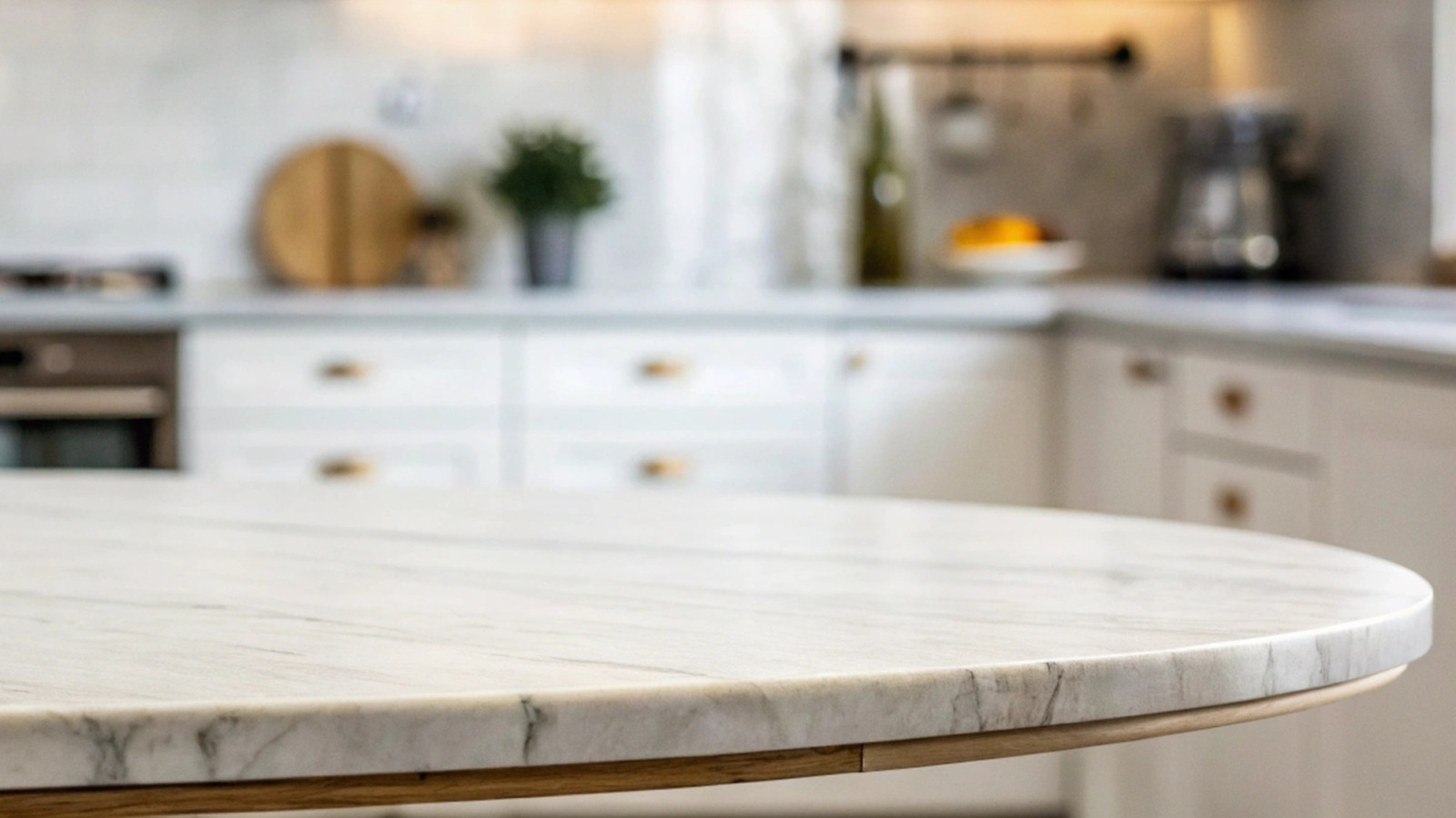
"Pencil edges are what you get when you just slightly round the edge of a countertop so that it doesn't form a sharp 90-degree angle but instead gently slopes like the shape of a pencil, hence the name. These edges can completely transform the vibe of your kitchen from a dangerous obstacle course into a sleek, elegant environment. It creates a sophisticated look in whatever material it's made from, whether granite, quartz, marble, or others (here are 14 kitchen countertop materials explained)."
"Pencil edges rose to popularity in the mid-2000s and have remained a viable choice for kitchen countertops even all these years later. Not only can they make the kitchen safer, but the lack of straight-edged corners means that you're less likely to chip the countertop, which means less money out of your pocket in the years to come (and here's a helpful guide to understanding curved versus sharp edges)."
Pencil edges slightly round countertop corners so they avoid a sharp 90-degree angle and instead present a gentle, pencil-like slope. These edges suit materials such as granite, quartz, and marble and are available as single, double, triple, extended, and beveled variations. Popular since the mid-2000s, pencil edges reduce the risk of injury and countertop chipping, lowering long-term repair costs. The smooth slope also minimizes dirt-collecting nooks, making cleaning easier. Pencil edges work well in modern and traditional kitchens, though they may be less fitting for ultra-luxury, highly ornate designs.
Read at Tasting Table
Unable to calculate read time
Collection
[
|
...
]